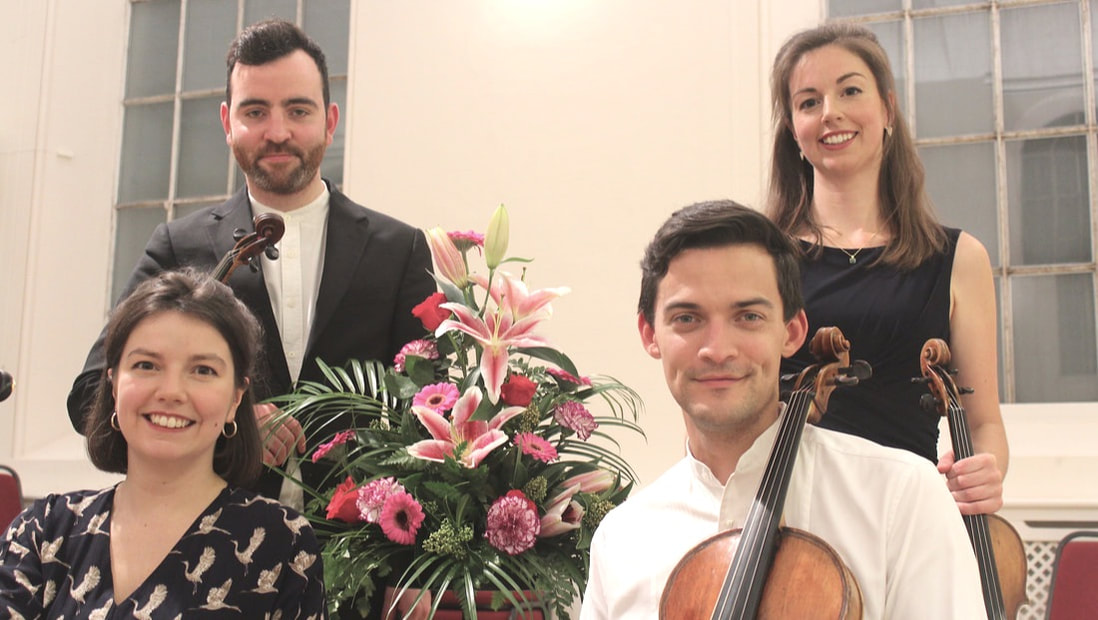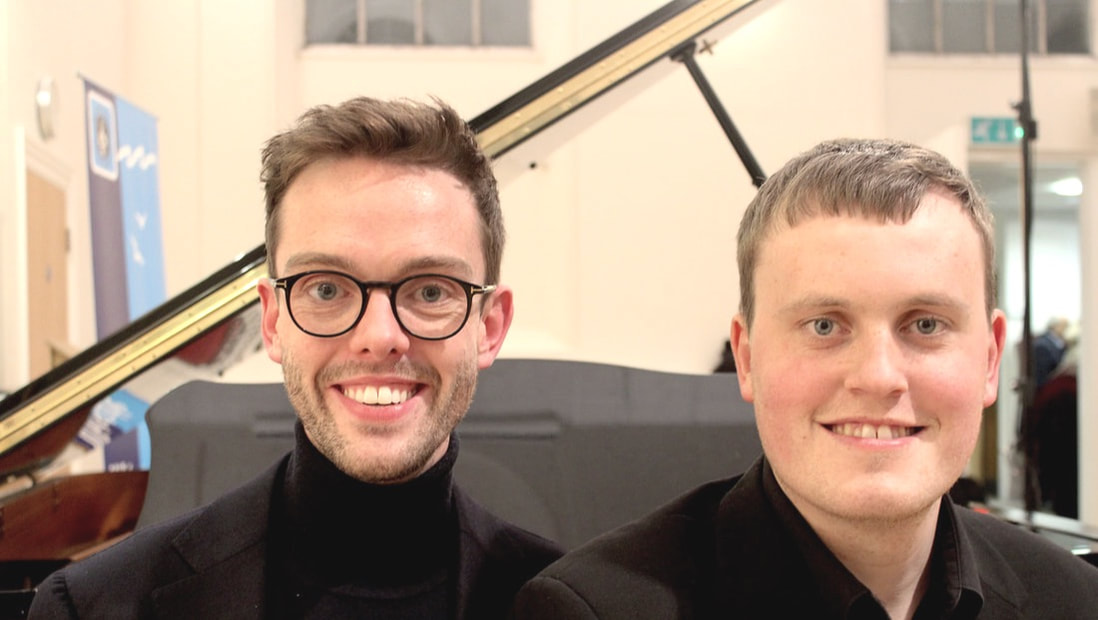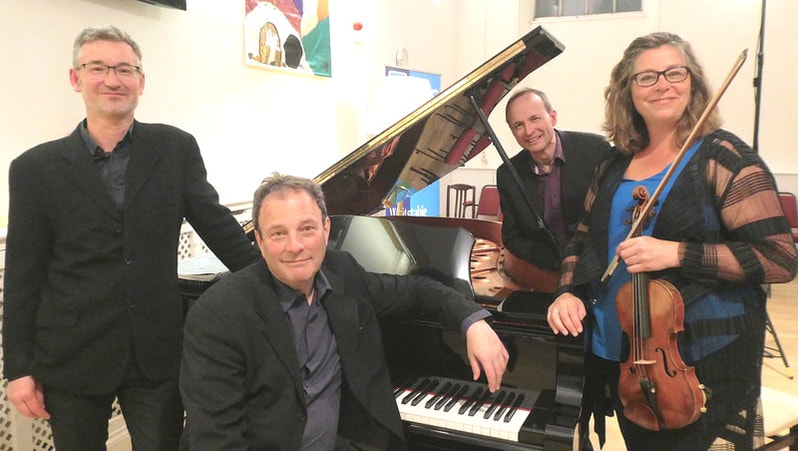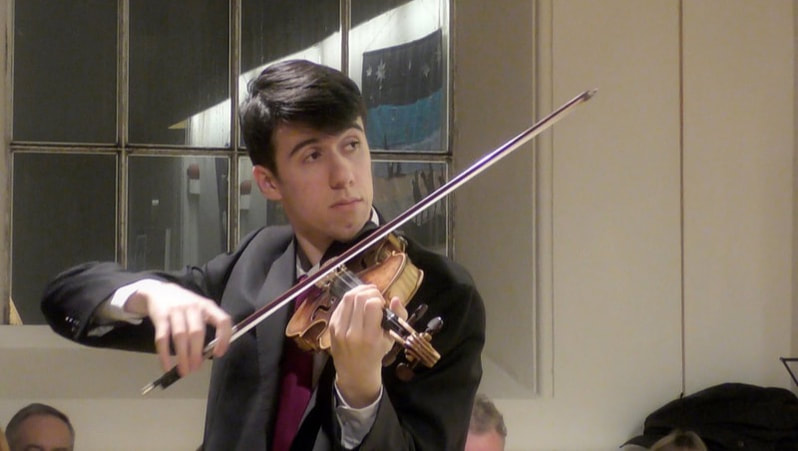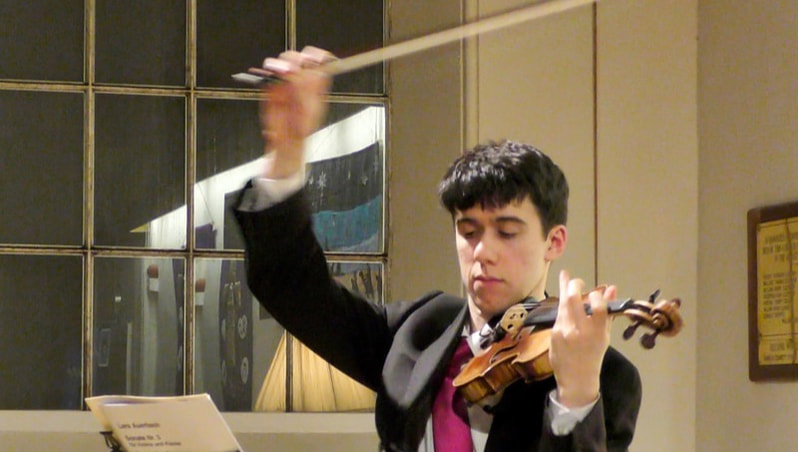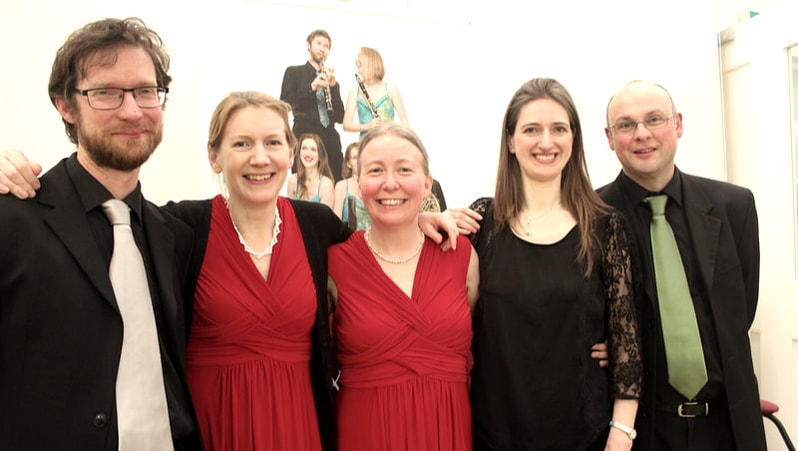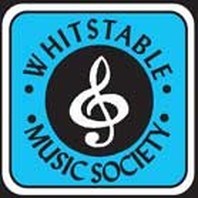What they say ...
Solem Quartet
|
The Haydn D Major quartet was one of the significant waymarks on the journey as the string quartet came out of the closet, or out of the court chambers, and into the concert hall, and the Solem made light work of its brilliance and bravura.
The Solem addressed this Bartok with heartfelt brio and winningly understated virtuosity. |
Bartok makes cruel fingering and bowing demands on his first violin especially, but Amy Tress led an inspired reading that illuminated the folkloric and dance imperatives of the score.
The Solem Quartet’s performance was full of energy and extremely engaging both sonically and visibly, with the piece dramatised by a strong emphasis on Beethoven’s characteristically heavy accents and close attention paid to the dynamic subtleties found in the piece.
The highlight of the evening was undoubtedly the Beethoven Quartet no 12 in E flat major, which was played with dedication and aplomb. The changes of tempo and mood were skilfully handled, at times putting the audience on the edge of their seats.
The Solem Quartet’s performance was full of energy and extremely engaging both sonically and visibly, with the piece dramatised by a strong emphasis on Beethoven’s characteristically heavy accents and close attention paid to the dynamic subtleties found in the piece.
The highlight of the evening was undoubtedly the Beethoven Quartet no 12 in E flat major, which was played with dedication and aplomb. The changes of tempo and mood were skilfully handled, at times putting the audience on the edge of their seats.
Nicholas Mogg and Jâms Coleman
Nicholas Mogg (baritone)The first was given by baritone Nicholas Mogg, who won this year’s Oxford Lieder Young Artist Platform and it was easy to see why, as not only is the voice remarkably well focused but his presence is alive and he communicates warmly, introducing the songs with relaxed confidence. He brought a profound yearning to Fauré’s Vaisseaux, nous vous aurons aimes en pure perte and a sensitive integrity to Schubert’s An die Musik. I look forward to hearing him again soon - Oxford Leider Recital
|
Rarely does Purcell’s vivid setting of Nahum Tate’s libretto find such convincing exponents as in Sky Ingram’s impassioned Dido, Nicholas Mogg’s clearly conflicted Aeneas…each sort out the intensity of meaning contained within Purcell’s notes as well as expertly delivering the notes themselves, including the most highly decorated passages. - Dido and Aeneas, Opera Now
...it was bass Nicholas Mogg who impressed most, not only with the clarity of his voice but also some very powerful performances of the arias Why do the nations so furiously rage and The trumpet shall sound. - Handel Messiah, Wolverhampton Grand Theatre
Jâms Coleman (piano)
Further highlights included a Lachrymae whose final 'Flow My Tears' was of a strikingly moving, stoic display and beauty, with Ridout's pianist Jâms Coleman very much part of that package. - The Strad, Festival 'Sommets Musicaux de Gstaad', Switzerland
The opening work was the 32 Variations in C minor, WoO 80. More like a set of études, this rarely heard work was extremely well performed, giving the pianist full scope to demonstrate his prodigious technique combined with a sensitivity and appreciation of Beethoven’s demands. - Lower Machen Festival, South Wales
Robert Plane (clarinet) with the Gould Piano Trio
Since the piano, violin and cello are the three most popular solo instruments, works for this combination invariably attract random groupings of big-name soloists who enjoy the camaraderie and lower-stress engagements.
The only comparison that comes to mind is the old Beaux Arts Trio; the combination of jeweler-like precision and a musical fire that ignites from the first bar . . .
Though three musical personalities come through, the melding of the minds (and fingers) is on a plane one rarely hears today . . .
Celebrity groups cannot equal the musical excitement generated by first-class players building up an interpretation through years of exacting study and performance, however memorable this or that solo passage may be. This was the most satisfying concert I’ve heard all season.
The only comparison that comes to mind is the old Beaux Arts Trio; the combination of jeweler-like precision and a musical fire that ignites from the first bar . . .
Though three musical personalities come through, the melding of the minds (and fingers) is on a plane one rarely hears today . . .
Celebrity groups cannot equal the musical excitement generated by first-class players building up an interpretation through years of exacting study and performance, however memorable this or that solo passage may be. This was the most satisfying concert I’ve heard all season.
Robert Plane (clarinet)
‘In this performance of works spanning a decade, it was the most recent pieces that were conveyed with greatest expressivity and huge emotional intensity. Speak Seven Seas for clarinet – played by Robert Plane, with Dukes on viola and Watkins on piano – had an apparently easy ebb and flow, but its dramatic tension was manipulated with the same unerring control. The Guardian February 2016, Huw Watkins Portrait Concert, Cardiff
Emmanuel Bach (Violin), Jenny Stern (Piano)
|
Music societies around the UK have long been able to benefit from young musicians who have been sponsored by charitable organisations dedicated to the development of artists at the outset of their performing careers. This legacy has enabled concert promoters to devise concert seasons that include such award holders, thereby easing to some degree their financial constraints.
|
One such organisation is the Countess on Munster Trust which for many years has funded further study and concert fees for young artists.
Whitstable Music Society was able to take advantage of this scheme for their last concert when it hosted the exciting young violinist Emmanuel Bach. He is a graduate from Oxford and The Royal College of Music and is rapidly showing himself to be a bright hope amongst British string players.
His talent, depth of musical perception and knowledge were well in evidence across a wide repertoire. Thus, in Bach’s exposed and challenging unaccompanied Sonata in A minor, BWV 1003, the textural clarity and sense of phrase structure revealed a mind fully aware of early music performing practice. The affecting delicacy of the slow movements were off set by the energy and rhythmic direction of the long fugue and final Allegro movements.
All the wide contrasts of mood and colour in Beethoven’s G major Sonata were clearly pointed. Here, Mr. Bach was more than ably accompanied by Jenny Stern, a pianist of extensive experience at this level. This work is very much a duo of equal partners and the shared understanding of the protagonists was palpable to all.
After the interval the audience was introduced to the Sonata No. 3 by an unknown composer from Russia named Lera Auerbach. This one movement piece had a variety of moods which were expertly dispatched with an obvious sense of involvement.
The more demanding Sonata (1917) by Claude Debussy, in which the composer makes conscious use of the great heritage of French compositions from the 17th and 18th centuries, received a colourful and cogent reading with, once again, a high level of ensemble and shared musical understand from both performers.
A delightful evening closed with Ysaye’s Caprice on a piano etude by Saint-Saens. The Belgian composer Ysaye was one of the foremost violin virtuosos of his time and his violin works, in particular his six unaccompanied sonatas are regarded as the ideal response to those by J.S. Bach. The delightful Caprice focusses on unbridled violin virtuosity and fun, the combination of which Emmanuel Bach cleared revelled, bringing a delightful evening to a rousing conclusion.
Whitstable Music Society was able to take advantage of this scheme for their last concert when it hosted the exciting young violinist Emmanuel Bach. He is a graduate from Oxford and The Royal College of Music and is rapidly showing himself to be a bright hope amongst British string players.
His talent, depth of musical perception and knowledge were well in evidence across a wide repertoire. Thus, in Bach’s exposed and challenging unaccompanied Sonata in A minor, BWV 1003, the textural clarity and sense of phrase structure revealed a mind fully aware of early music performing practice. The affecting delicacy of the slow movements were off set by the energy and rhythmic direction of the long fugue and final Allegro movements.
All the wide contrasts of mood and colour in Beethoven’s G major Sonata were clearly pointed. Here, Mr. Bach was more than ably accompanied by Jenny Stern, a pianist of extensive experience at this level. This work is very much a duo of equal partners and the shared understanding of the protagonists was palpable to all.
After the interval the audience was introduced to the Sonata No. 3 by an unknown composer from Russia named Lera Auerbach. This one movement piece had a variety of moods which were expertly dispatched with an obvious sense of involvement.
The more demanding Sonata (1917) by Claude Debussy, in which the composer makes conscious use of the great heritage of French compositions from the 17th and 18th centuries, received a colourful and cogent reading with, once again, a high level of ensemble and shared musical understand from both performers.
A delightful evening closed with Ysaye’s Caprice on a piano etude by Saint-Saens. The Belgian composer Ysaye was one of the foremost violin virtuosos of his time and his violin works, in particular his six unaccompanied sonatas are regarded as the ideal response to those by J.S. Bach. The delightful Caprice focusses on unbridled violin virtuosity and fun, the combination of which Emmanuel Bach cleared revelled, bringing a delightful evening to a rousing conclusion.
Neil Millensted
Emmanuel Bach (Violin), Jenny Stern (Piano)
|
J.S. Bach: Solo Sonata No. 2 in A minor BWV 1003 (1720)
The unaccompanied opening piece was the perfect introductory showcase for the soloist’s technical mastery. From the large leaps in register obvious in the first bars to the lyrical simplicity of the third movement, we were reminded of Bach’s unique music: full of challenges and creative possibilities, so well captured in tonight’s rendition of the sonata. |
Beethoven: Sonata No.8 in G. Op.30 No.3 (1802)
The well-versed dialogue violin-piano is evident throughout the piece, from the Allegro assai in 6/8 time to the light-hearted Allegro vivace finale. The musicians captured the tempestuous or the more delicate passages with suitably balanced aplomb.
Lera Auerbach: Sonata No.3 (2006)
The mournful introductory notes by piano are soon followed by delicate sounds and elegiac violin tones. A mixture of contemporary sound and familiar reverberations, the soaring harmonics skillfully captured the mystery of a less known piece.
Debussy: Sonata in G minor
Premiered a year before Debussy’s death (with the composer himself on the piano), the intricate and subtle mixture of moods and emotions that exude from the entire piece have expressed the intended melancholic theme.
Ysaÿe: Caprice, d'après L'Étude en Forme de Valse, Op.52, No.6 Saint- Saëns (1901)
Extravagant and mischievous, the piece was often played by the composer himself. This evening’s duo showcased convincingly Ysaÿe’s masterful arrangement in a lively and subtle performance.
Overall, Emmanuel Bach and Jenny Stern delighted the receptive audience with a rich and diverse repertoire spanning three centuries.
The well-versed dialogue violin-piano is evident throughout the piece, from the Allegro assai in 6/8 time to the light-hearted Allegro vivace finale. The musicians captured the tempestuous or the more delicate passages with suitably balanced aplomb.
Lera Auerbach: Sonata No.3 (2006)
The mournful introductory notes by piano are soon followed by delicate sounds and elegiac violin tones. A mixture of contemporary sound and familiar reverberations, the soaring harmonics skillfully captured the mystery of a less known piece.
Debussy: Sonata in G minor
Premiered a year before Debussy’s death (with the composer himself on the piano), the intricate and subtle mixture of moods and emotions that exude from the entire piece have expressed the intended melancholic theme.
Ysaÿe: Caprice, d'après L'Étude en Forme de Valse, Op.52, No.6 Saint- Saëns (1901)
Extravagant and mischievous, the piece was often played by the composer himself. This evening’s duo showcased convincingly Ysaÿe’s masterful arrangement in a lively and subtle performance.
Overall, Emmanuel Bach and Jenny Stern delighted the receptive audience with a rich and diverse repertoire spanning three centuries.
Daniela Vandepeer
Galliard Ensemble - Wind Quintet
“The Galliard Ensemble sparkled with every hue in this brilliant concert. A very distinguished band indeed who added something of themselves to every piece without ever obscuring the original work of the composer”
